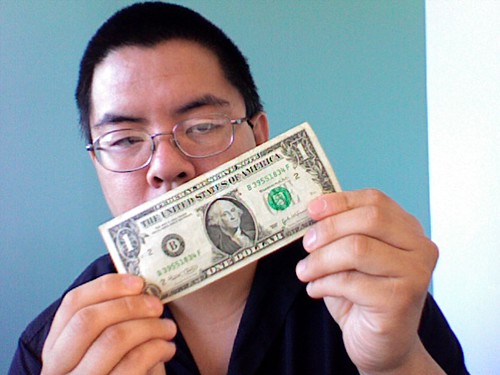Here’s a simple, painful truth: the free ride in social media marketing is over. We’ve known that this was coming for some time – there’s no such thing as a free lunch in the long-term, though there are the occasional free snacks. But the days of dining at someone else’s expense? Over. Facebook is almost purely pay to play now for brands, and the rest of the networks are so crowded or noisy that getting free attention is difficult. The next generation of networks? Even harder to reach, much less market on. We have to accept that the last 15 years have been an anomaly in free markets and capitalism, a fantastic run of disruption in which there was briefly something for nothing.
So what’s a marketer, especially a small-time marketer without Fortune 500 budgets, to do? Just give up and find a different job? Hardly. What we must do is reacquaint ourselves with a simple principle that we’ve lost sight of in the last 10 years: pay as you go.
Pay as you go is simple to understand: it’s marketing that pays for itself. Nothing could be simpler or more sustainable than buying into bigger and bigger forms of marketing with the revenue you generate. As a simple example, when I launched my second book, Marketing Red Belt, I made a few sales right away. Those sales gave me a small amount of revenue to work with, and I went and purchased a little bit of advertising with those dollars. The advertising was finely tuned and targeted to hit a bigger audience that I knew would convert. That advertisement went on to generate a few more dollars. This process repeated itself over and over again, and continues to this day.
So how do you go about this process? Assuming you have a business model that involves actual revenue, simply carve off a portion of every sale towards your marketing budget. It might be a penny. It might be a million bucks. If you don’t yet have a revenue model, now would be a good time to get one. I’d start by recommending affiliate marketing. There are a ton of programs out there that are reputable, run by exchanges like Commission Junction, Shareasale (affiliate link, duh), and the grand-daddy of them all, Amazon Associates. If you have any kind of audience at all, you’ll be able to find a product or service (even if it’s not yours) that can generate a little bit of revenue. That revenue can then start to power paid social media and create the virtuous circle of paid media marketing.
Pay as you go is within reach of every single marketer on the planet who is willing to put a little effort into identifying what your audiences actually want. Let the lazy folks wallow in lament about the free ride being over, and start powering up your marketing with pay as you go today!
You might also enjoy:
- Almost Timely News, January 7, 2024: Should You Buy a Custom GPT?
- Almost Timely News, January 14, 2024: The Future of Generative AI is Open
- Almost Timely News, January 28, 2024: Copyright Must NEVER Apply to AI-Made Works
- You Ask, I Answer: Retrieval Augmented Generation for Tax Law?
- Almost Timely News, February 11, 2024: How To Evaluate a Generative AI System
Want to read more like this from Christopher Penn? Get updates here:
 Take my Generative AI for Marketers course! |



Leave a Reply